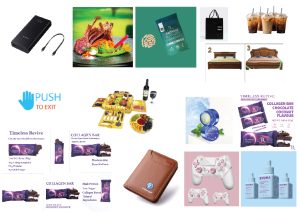
In an increasingly digital world, it’s easy to overlook the power of traditional marketing tools like business cards. However, business cards remain a critical component of branding and networking. They serve as a tangible representation of your business, helping you leave a lasting impression and build connections.
A well-designed business card not only communicates your contact information but also conveys your brand identity and professionalism. In this article, we’ll explore why business cards are essential for brand and business growth, what makes them effective, and how to design one that truly stands out.
Why Business Cards Still Matter
Despite the prevalence of digital communication tools, business cards hold a unique and irreplaceable value in personal and professional interactions.
1. First Impressions Matter
Your business card is often the first impression someone has of your business. A visually appealing, high-quality card communicates professionalism, attention to detail, and credibility.
2. Tangible and Memorable
Unlike an email or a LinkedIn connection, a business card is a physical object. People are more likely to remember you when they have a tangible reminder of your interaction.
3. Networking on the Go
Whether you’re at a trade show, conference, or casual meeting, business cards make it easy to share your contact information quickly and effectively.
4. Brand Recognition
Your business card reflects your brand’s identity, including its colors, logo, and messaging. Consistent branding helps potential clients and partners recognize and remember your business.
5. Accessible to All Audiences
Not everyone you meet will have access to digital platforms or be willing to connect online immediately. Business cards bridge the gap between traditional and digital communication.
The Role of Business Cards in Brand Identity
Brand identity is the essence of what makes your business unique. Business cards are a small but significant part of creating a cohesive brand experience.
1. Reinforces Your Brand’s Visual Identity
A well-designed business card incorporates your brand’s logo, colors, and typography. These elements ensure consistency across all marketing materials and help establish brand recognition.
2. Communicates Your Values
The design and quality of your business card speak volumes about your brand. A sleek, minimalist card may suggest sophistication, while a vibrant, creative design may reflect innovation.
3. Builds Trust and Credibility
A professional business card shows you take your business seriously. It reassures potential clients and partners that you’re a trustworthy and established entity.
4. Conveys Key Information
Beyond contact details, a business card can include your tagline, website, and social media handles, offering a snapshot of your brand’s story and online presence.
How Business Cards Drive Business Growth
Business cards are more than just a means of sharing contact information—they are a strategic tool for growth.
1. Encourage Networking Opportunities
Having business cards on hand encourages spontaneous networking. Whether you’re meeting someone in an elevator or at a business lunch, a card ensures you’re always prepared to make connections.
2. Increases Word-of-Mouth Referrals
A visually appealing business card is likely to be shared among colleagues and friends. This ripple effect can expand your network and bring in new opportunities.
3. Enhances Local Marketing Efforts
Small businesses can leverage business cards as part of their local marketing strategy. Cards left at cafes, libraries, or community centers can attract nearby customers.
4. Drives Website Traffic
Including a website URL or QR code on your card can encourage recipients to visit your site, increasing traffic and potential leads.
5. Facilitates Follow-Ups
Exchanging business cards provides a natural segue for follow-up communication. It gives the recipient a reason to reach out or remember you after the initial interaction.
What Makes a Great Business Card?
To ensure your business card is effective, it needs to be both visually appealing and functional.
1. Design Essentials
A great business card strikes a balance between creativity and professionalism. Key design elements include:
- Logo: A clear, high-quality logo that represents your brand.
- Typography: Fonts that are legible and aligned with your brand identity.
- Color Scheme: Colors that reflect your brand’s personality and values.
- Whitespace: Avoid clutter by leaving enough space for key information to stand out.
2. Quality Materials
The quality of the paper and printing can significantly impact how your business card is perceived. Opt for durable materials, embossed details, or finishes like matte, glossy, or textured to leave a strong impression.
3. Strategic Information Placement
Include essential information without overcrowding the card:
- Name and title.
- Company name and logo.
- Phone number and email address.
- Website URL and social media handles.
- Tagline or QR code (optional).
4. Unique Features
Stand out with creative touches like:
- Double-sided designs.
- Foldable or die-cut shapes.
- Interactive elements like AR integration or scannable QR codes.
Tips for Maximizing the Impact of Your Business Cards
1. Keep Cards Readily Available
Always carry a few business cards with you. You never know when a networking opportunity might arise.
2. Pair Cards with a Personal Touch
When handing over your card, engage in meaningful conversation to make the interaction memorable.
3. Update Cards Regularly
Ensure your contact information and branding are always up to date. Outdated cards can cause confusion or reflect poorly on your business.
4. Distribute Strategically
Identify key places to leave your cards, such as industry events, trade shows, or partnering businesses.
5. Leverage Digital Integration
Incorporate QR codes that link to your website, portfolio, or LinkedIn profile for a seamless transition to your online presence.
The Future of Business Cards
As technology evolves, so do business cards. Digital business cards and NFC-enabled cards are gaining popularity, allowing users to share contact information with a tap of a smartphone. However, traditional paper cards continue to hold their ground as a personal and tactile way to connect.
Combining physical and digital business cards can give you the best of both worlds, ensuring your brand remains accessible and memorable.
Conclusion: Business Cards as a Growth Tool
Business cards are a powerful tool for establishing and growing your brand. They are more than just a means of exchanging contact information—they are a symbol of professionalism, a representation of your brand, and a gateway to new opportunities.
By investing in thoughtful design and strategic distribution, you can create business cards that leave a lasting impression, foster meaningful connections, and drive your business forward.
Ready to create impactful business cards? At [Your Company Name], we specialize in designing business cards that reflect your brand and help you achieve your goals. Let us help you stand out and grow your business!
- Phone: (+880) 1767840720
- Email: visiondigitalstudio@gmail.com
- Website: https://visiondigitalstudio.com/
Make your first impression count—start designing your business card today!







